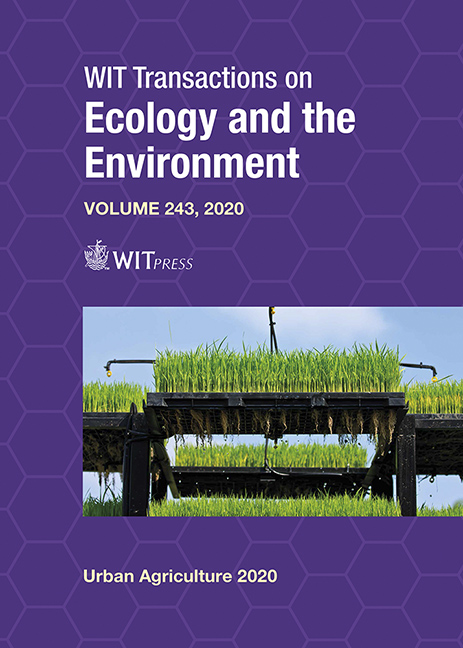URBAN HEAT ISLAND MITIGATION DUE TO ENHANCED EVAPOTRANSPIRATION IN AN URBAN GARDEN IN SAINT PAUL, MINNESOTA, USA
Price
Free (open access)
Transaction
Volume
243
Pages
7
Page Range
39 - 45
Published
2020
Paper DOI
10.2495/UA200041
Copyright
WIT Press
Author(s)
GASTON SMALL, IVAN JIMENEZ, MICHAEL SALZL, PALIZA SHRESTHA
Abstract
As a result of extensive urban development coupled with warming temperatures, urban heat islands (UHI) have become an important factor affecting energy consumption and human health in cities. Prior research has shown that evapotranspiration (ET) from urban vegetation can have a significant cooling effect, but there are relatively few direct measurements from urban vegetable gardens. We compared hourly temperature measurements during two summers (2017 and 2018) in a 750 m2 research garden at the University of St. Thomas (Saint Paul, Minnesota, USA) to hourly temperatures at the nearby Minneapolis-Saint Paul (MSP) International Airport, located 6 km to the south. We also quantified seasonal ET (June–October) in 132 garden plots and five reference turfgrass plots during the summers of 2017 and 2018. For both years, an increase in temperature of 1.00°C at the MSP airport resulted in an average increase of 0.55°C in the research garden. At temperatures greater than 22°C, the garden was cooler on average compared to MSP airport. ET in the garden plots was significantly higher than in the grass reference plots both years, with means of 46 cm for garden plots compared to 19 cm for grass plots in 2017, and 51 cm for garden plots compared to 33 cm for grass plots in 2018. These results are consistent with other research showing potentially large benefits of cooling through ET from urban gardens that are primarily aimed at crop production.
Keywords
urban agriculture, vegetation, temperature





